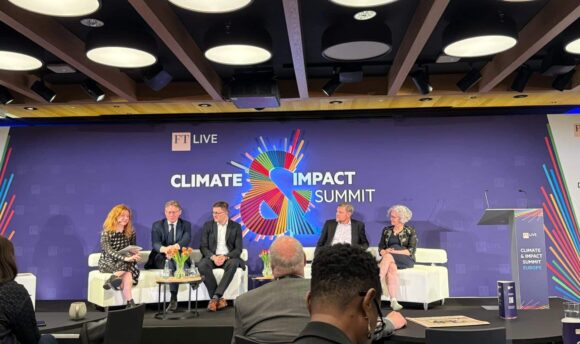As climate change spirals out of control, natural disasters are becoming more frequent and expensive. Munich Re, the world’s biggest reinsurance company, reports that natural disasters caused losses of $280 billion in 2021, up from $166 billion in 2019 and $210 billion in 2020.
The insurance industry was created to manage risk, but under pressure from the mounting impacts of climate change, its business model is now stretching at the seams.
Henri de Castries, then the CEO of French insurer AXA, warned in 2015: “We know that if average temperatures increased by 2 degrees Celsius, the world may still be insurable. But it’s very clear that at 4 degrees C it would not.”
Hurricane Ian suggests that even at the present level of 1.2 degrees Celsius of warming, insurance is becoming unaffordable for communities exposed to climate risks in growing areas from Florida to California.
A flood-affected older man gets free food provided by a local philanthropist on the banks of the Swat River in Dagi Mukarram Khan, a village in Charsadda district in Pakistan’s northwest Khyber Pakhtunkhwa province,
The costs of Hurricane Ian are currently estimated at more than $60 billion. CoreLogic, a business intelligence firm, predicts that as a consequence, “Insurers will go into bankruptcy, homeowners will be forced into delinquency and insurance will become less accessible in regions like Florida”.
But there is another way, in which the climate buck doesn’t stop with insurance companies, local communities or the state.
Climate disasters are not true ‘natural’ disasters but are caused by humans, particularly by the burning of fossil fuels. Indeed, the Carbon Majors Database finds that just 100 companies are responsible for 71% of global carbon emissions.
Oil companies and other carbon majors are now being taken to court for their contribution to the climate crisis. Such lawsuits are becoming increasingly feasible due to the rapid evolution of attribution science, which links extreme weather events to climate change.
In addition to the damages from the physical impacts of climate disasters, some insurance companies are thus already having to cover the legal expenses of carbon majors when they are sued for their climate contributions.
While insurers may have to reimburse their clients, they are then allowed to pursue legal action to reimburse their costs against the third parties who caused the damages.
Car insurers, for instance, regularly recover at least part of their losses through so-called ‘subrogation claims’ against the parties responsible for accidents.
Other insurers have brought such claims against municipalities which failed to make their infrastructure more resilient to climate disasters, therefore aggravating flood damage.
As the costs of climate disasters mount, insurance companies should explore ways how they can bring similar claims against the companies which are driving climate-related losses through their carbon emissions. They should, in other words, explore how they can make big polluters pay their fair share for the costs of hurricanes like Ian.
The public nuisance and negligence claims against carbon majors that are currently being tested in various courts offer a valuable basis for developing these subrogation suits.
The reinsurance industry, to which insurers themselves turn for the cover of catastrophic risks, is particularly exposed to the growing costs of climate disasters.
Reinsurers which are not covering significant liability costs of carbon majors are best placed to bring subrogation cases against these large carbon emitters, as they will not face the potential conflict of interest of acting as the insurer of the company they attempt to sue.
Taking carbon polluters to court requires courage and innovative thinking, and insurance companies have so far shied away from it.
But as insurers, local businesses and families in Florida are currently experiencing, the current model of covering the costs of climate disasters is quickly becoming unworkable. As global warming careens towards 1.5 degrees Celsius and beyond, the pressure to fairly allocate these costs will rapidly increase.
Through subrogation claims insurers could make polluters pay. They could keep insurance affordable for communities exposed to climate risks and send a stark message to carbon majors that they need to reconsider their role in extracting and burning fossil fuels.



